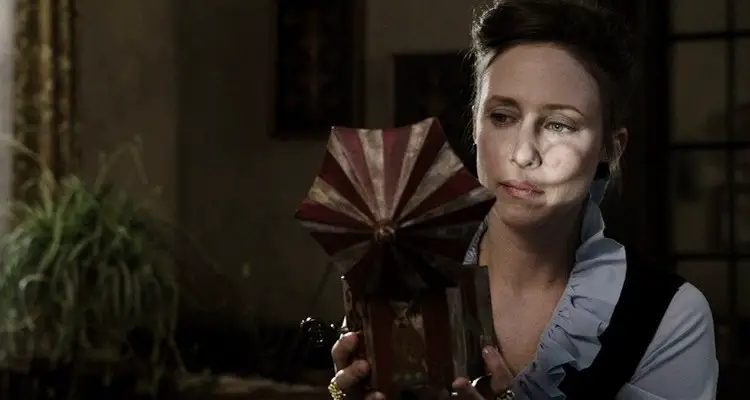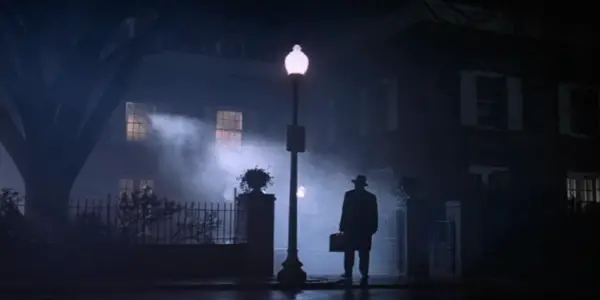Evolution and Exorcism: The State of Modern Horror

Ben's milkshake is unisex and brings everyone to the yard.…
A well-executed horror film is quite possibly the most pure and affecting of all cinematic experiences. A horror film can be the ultimate ‘pop-corn’ movie – a work that draws you into its world, gnaws on your emotions and intellect, and finally spits you back into your seat, thrilled and grateful and dripping with adrenaline. It makes sense that horror films illicit a strong response – after all, we are naturally hard-wired to fear.
Horror films are able to reach us in a profound, primal way because fear is more than just an emotion or a philosophical concept – it is a legacy of our evolution; a biological imperative reinforced by the ultimate incentive: survival. When you consider how our developmental makeup predisposes us to experience horror, the number of good horror movies seems alarmingly small. Is there any promise left in the modern horror? Though the genre is awash with gore and choked with crass cash-ins, there’s evidence that the blueprint for high quality horror has been unearthed.
Defining the Wasteland
Before we can discuss the way forward, we need to get to know the problem. Why are the majority of recent horror films so uninspired? Any number of factors could be associated with the current malaise, but a primary cause has to be perception. Horror films are often underwhelming because of what they’re expected to do. More than films in any other genre, horror films are often assessed as experience pieces rather than complete narrative works. Thriving theater attendance in the age of online streaming reinforces the notion that the experience of movie-going is still important; that every film has, or at least ought to have, some degree of spectacle. In the horror genre, that spectacle is often allowed to supersede the quality of the work itself.
A film doesn’t need to be particularly intelligent or well-crafted to frighten us – it simply has to check the appropriate boxes. Our most primitive and intrinsic fears – darkness, death, disease, etc. – are well known and easy to synthesize. We’re easy targets, and Hollywood knows it. The predilection for terror which can make a good horror film such a profound experience also encourages underachievement. If jump-scares and gallons of red corn syrup are enough to justify the price of admission, is it realistic for film buffs to expect something more?

Terror: A Holistic Approach
Let’s not get too far ahead of ourselves – before we can discuss where horror film is going, we need to examine where it’s been. What are today’s most thoughtful horror filmmakers trying to recapture? Journey with me to 1973, a year marked by heinously flared pants, an abundance of polyester, and the arrival of William Friedkin‘s horror masterpiece, The Exorcist. Widely regarded as one of the most frightening films of all time, The Exorcist is famous for its chilling visual effects and the evocative musical theme which, to this day, brings one of my friends to tears. What sets the The Exorcist apart comes down to more than just audio-visual flair , however – it is a timeless film because it embodies three elements of great horror.
1) The presence of primal and intellectual terror
While the average horror film appeals only to the aforementioned architecture of primal fear, the true masterpieces also engage us intellectually and spiritually. Bumps in the night and chainsaw-wielding maniacs provide us with a visceral jolt, but these scares are fleeting unless the film also engages us at a higher level. In The Exorcist, the sinister visage and horrific contortions of Regan MacNeil engage our animal predispositions, while our intellect is confronted with the horror of damned souls and lost faith.
2) Thoughtful, character-driven narrative
Without well developed characters, a film becomes a litany of disconnected events. Too often, horror films are populated with shallow and archetypal victims whose only purpose is to provide fodder for the abattoir. When executed properly, horror itself is given context and weight by the characters. Each is flawed but fully realized, responding to events in a realistic and well-rationed way and allowing the audience to participate emotionally. Our own fear and discomfort at the sight of the diabolical goings-on are only magnified as we commiserate with Fathers Kerras and Merrin.
3) Construction that maintains the suspension of disbelief
It is vital that a horror film treats its subject matter, which is often sensational, with care sufficient for the viewer to maintain his place in the reality of the production. Though the visual effects look a bit clumsy by today’s standards, the construction of The Exorcist allows for almost complete immersion. Due to the overall quality and care of the the script, the narrative and the technical aspects of the film, we feel as though these events are taking place in a well constructed reality rather than a studio lot.
Modern filmmakers should not have to mimic the classics to produce quality movies, but in terms of technical nous, there’s much to be learned from the films like The Exorcist.
Hope for Horror
The landscape of modern horror is bleak, but not without fleeting signs of life. Though it spawned a series of increasingly inane and derivative sequels, 2007’s Paranormal Activity was innovative and atmospheric. Director Oren Peli utilized the found-footage format popularized by The Blair Witch Project to create a film that is frightening, smart, and elegantly simple. Jaume Balagueró and Paco Plaza employed similar techniques in [REC], a Spanish horror masterpiece set in a quarantined apartment building. The horror genre seems itself seems to be quarantined at times; themes are recycled, tired tropes are maintained and a seemingly endless army of teenagers frolic onward to various and gruesome demises.
2012’s The Cabin in the Woods proved, refreshingly, that in terms of broader cultural trends, horror was not completely sealed off from the outside world. Tapping into contemporary deconstructionist zeitgeist, Drew Goddard and Joss Whedon created a film that is both an homage to and a parody of the horror genre as a whole. It’s difficult to classify The Cabin in the Woods as a horror film in the classic sense – it’s more of a black comedy – but it adds a sharp and satirical counterpoint to the horror conversation.
Technical innovation and clever deconstruction notwithstanding, the best of recent horror films have adopted a back-to-basics approach in terms of subject matter and execution. Of these recent entries to ‘classic’ horror, none has bees as impressive or truly frightening as 2013’s The Conjuring. Director James Wan made a name for himself with 2004’s torture-porn trendsetter Saw, but The Conjuring is by far his most accomplished work to date. The Conjuring is unabashedly old-school, from the ‘based on a true story’ text to the creaky haunted-house setting.

At first glance, there is nothing to suggest The Conjuring will be anything other than paint-by-numbers horror. This impression quickly dissolves. While the narrative never strays too far from the expected, The Conjuring feels fresh because of its careful execution and understatement. The below clip is a perfect representation of the film’s success, built on the back of intelligent construction rather than cheap scares.
When the unseen force manipulates the character’s body, Wan establishes primal fear by showing that the characters are under direct physical threat. After this initial interaction, the tangible evidence of the force is removed from the scene. We are now left alone with our thoughts and the dialogue of the two girls. We are told, not shown, that something is lurking is in shadows at the corner of the room. We feel the threat in the frantic dialogue, but rather than being spoon-fed frightful images, our intellect conjures possibilities far worse than anything a special effects artist could create. Wan allows us to wonder and to question the reality of the situation – at this moment we are at the crossroads of biological imperative and intellectual terror, and the effect is profound.
The Conjuring isn’t a perfect film, but it’s important in terms of what it says about contemporary horror film making. Mainstream horror film makers have begun to rediscover something important: a scary movie can be about more than just cheap thrills – it can engage us intellectually and satisfy our needs for artistic and thoughtful cinema. Utilizing a broad and nuanced approach to fear, character driven narrative and intelligent construction, a brave few are working to exorcise the demons of mediocrity from modern horror.
Recommended Viewing
If you’ve lost faith in modern horror or are a brave newbie simply looking for a place to start, consider the following films. Each has its own style and strengths, but they all satisfy my demands for excellent, thoughtful horror.
The Changeling (1980)
The Others (2001)
Insidious (2010)
The Conjuring (2013)
What, to you, determines the quality of a horror film? What are your hopes for the genre?
FilmInquiry is all about discussion – comments, feedback and shares are always appreciated!
Does content like this matter to you?
Become a Member and support film journalism. Unlock access to all of Film Inquiry`s great articles. Join a community of like-minded readers who are passionate about cinema - get access to our private members Network, give back to independent filmmakers, and more.
Ben's milkshake is unisex and brings everyone to the yard. He'd love to give you more information about it but doesn't work pro bono.













